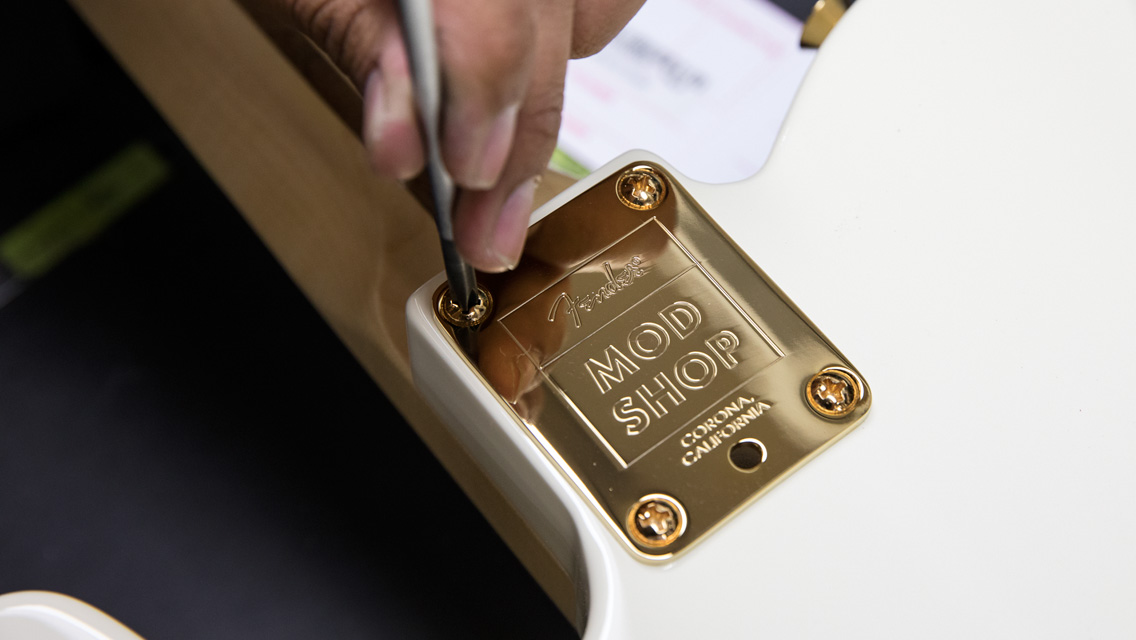By Jeff Owens
How Micro-Tilt Majorly Affects Your Action
It's a simple solution that will save you a lot of headaches.

Sections
Originally introduced in the early 1970s, the Micro-Tilt neck adjustment is an easy way of tweaking the angle of your guitar or bass’ neck in relation of the instrument body.
Basically, Micro-Tilt is a simple leverage mechanism. Through a small hole in the neck plate, a small Allen screw can be used to increase neck angle. Tightening the screw makes it protrude beyond the surface of the neck pocket, pushing on a metal plate mounted on the bottom of the neck heel and thus slightly increasing the neck angle.
Today, there are Micro-Tilt mechanisms for four- and three-bolt necks (bolt in this instance being an enduring Fender misnomer; necks are fixed to the bodies with screws). On four-bolt models, the metal plate on the neck heel is separate from the holes for the neck bolts. On three-bolt models, the bottom neck-mounting bolt passes through the plate, but the adjustment works the same way. In either design, the neck-mounting bolts must be loosened slightly in order for Micro-Tilt adjustments to me made, then tightened once the desired neck angle is achieved.
OK, but why would I need to adjust my guitar’s neck angle in the first place?
Many players will never need to adjust neck angle. But there are circumstances in which the adjustment becomes necessary. Mainly, the angle at which the neck is seated in the neck pocket affects how low the bridge must be set in order to achieve optimal playing action (string height above the fingerboard).
If the neck angle is too shallow, the action can still be too high even after setting the bridge (or bridge saddles) as low as possible. Perhaps the original angle wasn’t ideally set in the first place. More often, replacing the bridge or combining a neck and body from two different instruments can be the culprit. When replacing the bridge with a shorter one or a taller one, a neck angle adjustment might very well be necessary. In any case, if the string height isn’t comfortable even after a good setup, neck angle adjustment might be helpful.
To make this a simple DIY adjustment, Fender introduced Micro-Tilt in 1971 when it switched the Stratocaster from four- to three-bolt neck plates. Other Fender guitars of the early 1970s, such as the Telecaster Custom and Telecaster Deluxe, subsequently featured three-bolt Micro-Tilt necks.
Today, Fender offers several instruments equipped with Micro-Tilt. These have neck plates with three- and four-bolt neck plates and can be found in the American Professional Series, in addition to other models like the Classic Series '72 Telecaster Custom and the Classic Series '70s Stratocaster.
Don’t miss out!
Be the first to know about new products, featured content, exclusive offers and giveaways.


